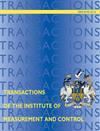The adaptive impedance control with desired force fuzzy adjustment for underwater manipulator-compliant operation
IF 1.7
4区 计算机科学
Q3 AUTOMATION & CONTROL SYSTEMS
Transactions of the Institute of Measurement and Control
Pub Date : 2024-04-19
DOI:10.1177/01423312241241835
引用次数: 0
Abstract
To achieve versatile target grasping, ensure successful holding, and minimize potential damage to the target, we propose an adaptive impedance control method for underwater manipulators. This method entails establishing a force-tracking control system based on the position impedance model and identifying target impedance parameters using the recursive least squares method. By adjusting the grasping force’s desired value according to impedance parameters and manipulator characteristics, adaptive proportional–integral–derivative (PID) control is realized for the desired position. This adjustment process considers the error between the desired force and the environmental force, allowing the system to track different desired force signals while ensuring accurate position tracking. To validate the effectiveness of the proposed method, we conducted simulation with the MATLAB platform and experiment verification. The results demonstrate the adaptive impedance control method’s excellent position-tracking performance in both free and constrained spaces. The real-time adjustments of the desired force effectively accommodate various grasping targets, while the adaptive adjustment of the desired position enables precise tracking of the desired force value, eliminating static errors. Overall, the entire control system exhibits flexibility and robustness.用于水下机械手顺应性操作的带有期望力模糊调整的自适应阻抗控制
为了实现多功能目标抓取,确保成功固定目标,并最大限度地减少对目标的潜在损害,我们提出了一种用于水下机械手的自适应阻抗控制方法。该方法基于位置阻抗模型建立力跟踪控制系统,并使用递归最小二乘法确定目标阻抗参数。通过根据阻抗参数和机械手特性调整抓取力的期望值,实现期望位置的自适应比例积分派生(PID)控制。这一调整过程考虑了期望力与环境力之间的误差,使系统能够跟踪不同的期望力信号,同时确保精确的位置跟踪。为了验证所提方法的有效性,我们利用 MATLAB 平台进行了仿真和实验验证。结果表明,自适应阻抗控制方法在自由空间和约束空间都具有出色的位置跟踪性能。对所需力的实时调整可有效适应各种抓取目标,而对所需位置的自适应调整则可实现对所需力值的精确跟踪,消除静态误差。总体而言,整个控制系统具有灵活性和鲁棒性。
本文章由计算机程序翻译,如有差异,请以英文原文为准。
求助全文
约1分钟内获得全文
求助全文
来源期刊
CiteScore
4.10
自引率
16.70%
发文量
203
审稿时长
3.4 months
期刊介绍:
Transactions of the Institute of Measurement and Control is a fully peer-reviewed international journal. The journal covers all areas of applications in instrumentation and control. Its scope encompasses cutting-edge research and development, education and industrial applications.

 求助内容:
求助内容: 应助结果提醒方式:
应助结果提醒方式:


